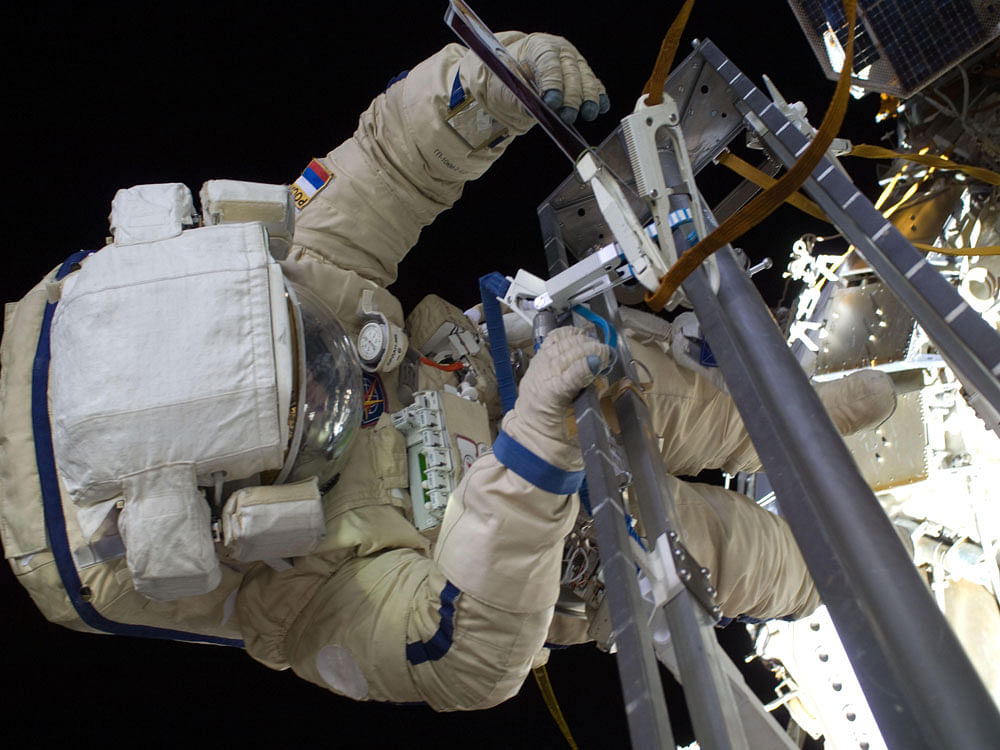
Warning signs of a type of space weather event can be detected much earlier than with current forecasting techniques - providing critical extra time that could help protect astronauts, NASA scientists sa
y.
The Sun sometimes erupts with bursts of light, solar material, or ultra-fast energised particles - collectively, these events contribute to space weather.
Earth's magnetic field and atmosphere protect us on the ground from most of the harmful effects of space weather, but astronauts in low-Earth orbit - or even, one day, in interplanetary space - are more exposed to space weather, including bursts of fast-moving particles called solar energetic particles, or SEPs.
"Robotic spacecraft are usually radiation-hardened to protect against these kinds of events. But humans are still susceptible," said Chris St Cyr, a space scientist at NASA's Goddard Space Flight Centre in the US.
NASA wants to help improve systems that would provide future astronauts with advance warning of incoming SEPs
Scientists from NASA and the National Centre for Atmospheric Research in Boulder, US showed that tracking an associated kind of solar explosion - fast-moving clouds of magnetic solar material, called coronal mass ejections - can help.
They observe coronal mass ejections using a type of instrument called a coronagraph, in which a solid disk blocks the Sun's bright face, revealing the Sun's tenuous atmosphere, called the corona.
Space-based coronagraphs are more widely used in space weather research because of their wide-field solar views that are not interrupted by cloud cover or Earth's rotation.
However, ground-based coronagraphs have their own advantages - while they can only observe the Sun in the day during clear weather, they can return data almost instantly, and at a much higher time resolution than satellite instruments.
This speed of data return could make a significant difference, given that SEPs can move at nearly the speed of light - so their total travel time can be less than an hour from the time they are accelerated near the sun to when they reach Earth.
"With space-based coronagraphs, we get images back every 20-30 minutes," said St Cyr.
Scientists worked backwards to see whether they could use a ground-based coronagraph to get that key information on the CME's speed fast enough to lengthen the warning time.
Their search confirmed that the necessary information to predict the arrival of the energetic particles was available about 45 minutes before the particles arrived at Earth - tens of minutes before they left the Sun's inner atmosphere.